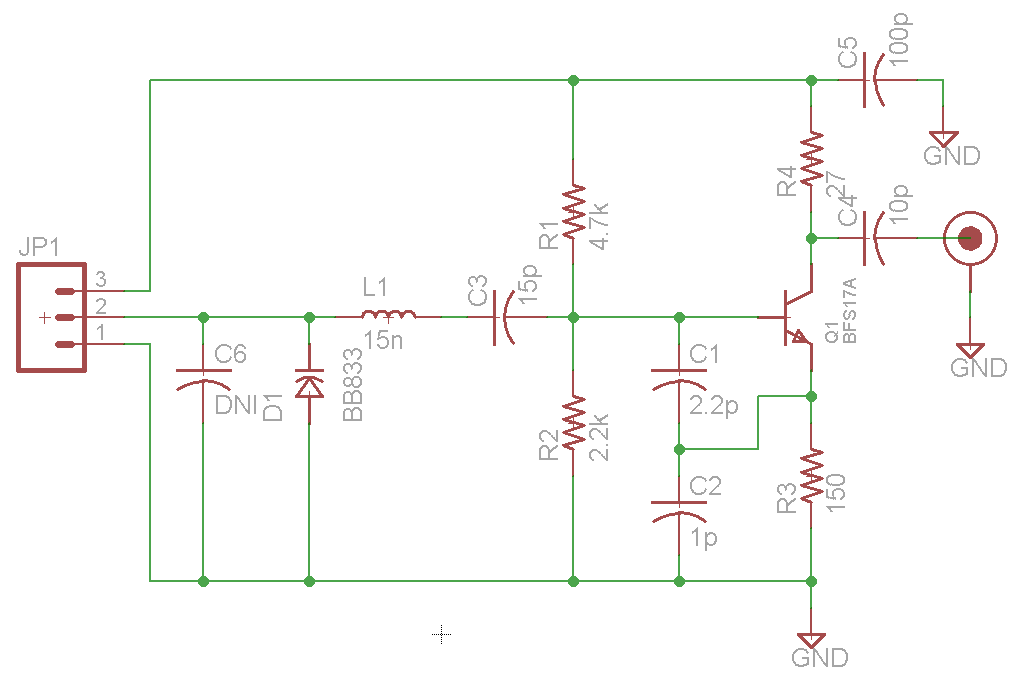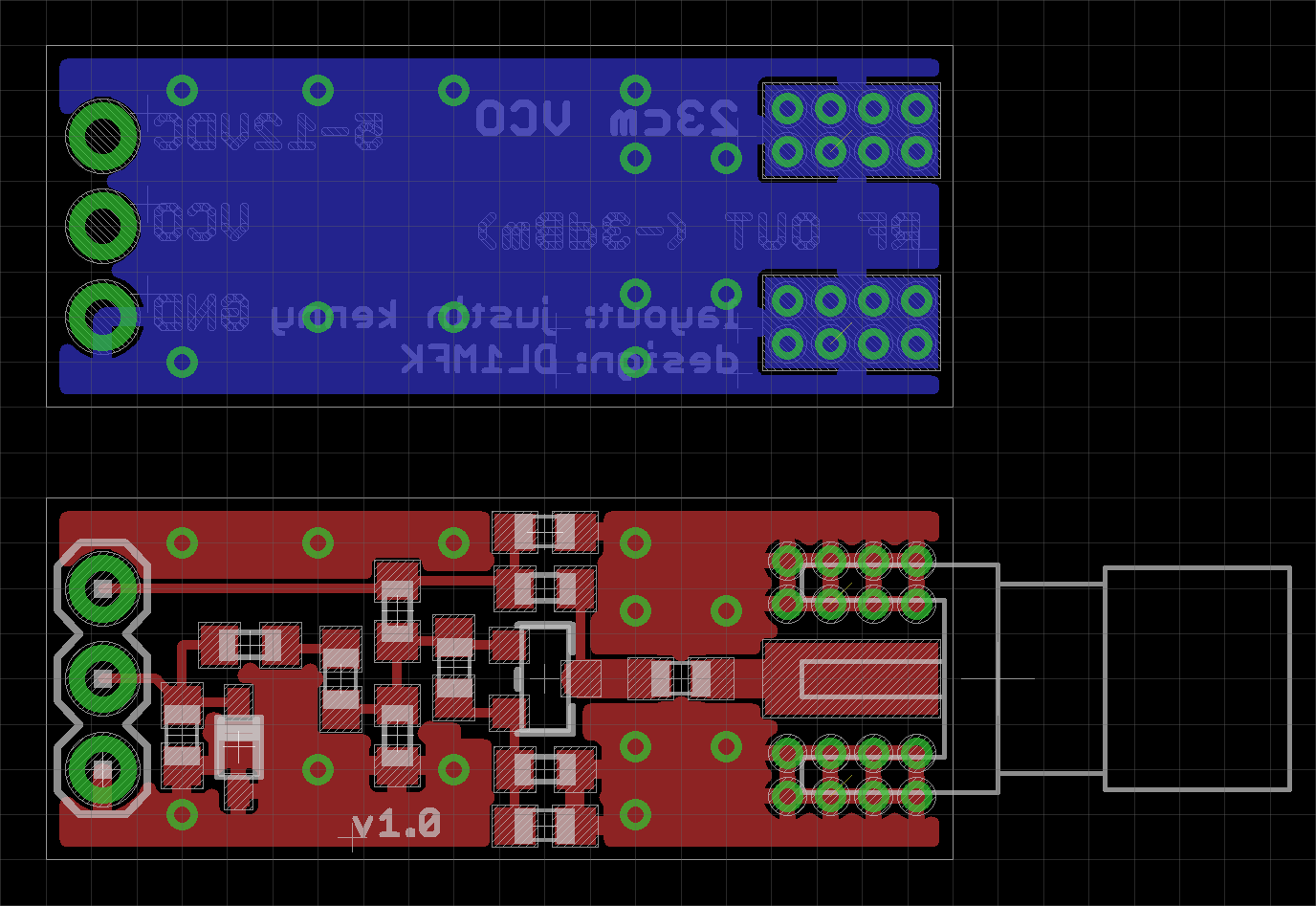SA PD
Jump to navigation
Jump to search
This page describes the Phase Detector Module for the DIY Spectrum Analyzer.
Summary
The Phase Detector is based on the SLIM PDM from the "Scotty Modular Spectrum Analyzer". The original specifications are for a 360 degree -20 to +18dBm, with an operating frequency range of LF-30MHz (10.7MHz nominal). The original design was modified to use higher speed logic gates in the hope of increasing the upper frequency range, and the addition of a "pass-thru" XOR gate for the IF chain to reduce phase offset error due to the additional gate.
Testing
- 8.15.2013: ...
| Frequency (MHz) | Power (dBm) |
| 150 | -0.06 |
| 200 | -0.02 |
| 250 | -0.03 |
| 300 | -0.07 |
| 350 | -0.06 |
| 400 | 0.03 |
| 450 | 0.04 |
| 500 | 0.02 |
| 550 | -0.07 |
| 600 | -0.07 |
| 650 | 0.05 |
| 700 | 0.09 |
| 750 | -0.05 |
| 800 | -0.03 |
| 850 | 0.02 |
| 900 | 0.00 |
| 950 | -0.07 |
| 1000 | -0.10 |
| 1500 | -0.17 |
| 2000 | 0.21 |
| 2500 | 0.04 |
| 3000 | 0.62 |
| 3500 | 1.72 |
| 4000 | 1.47 |
Revisions
- 1.0: Initial revision.
Bill of Materials (v1.0)
| Part | Quantity | Unit Cost | Total Cost | Source |
| ADF4350 | 1 | $12.02 | $12.02 | Digi-Key |
| FOX924B-10.000 | 1 | $3.76 | $3.76 | Digi-Key |
| ADP124 | 1 | $1.95 | $1.95 | Digi-Key |
| AP1115 | 1 | $0.54 | $0.54 | Digi-Key |
| MSP430G2553 | 1 | $2.58 | $2.58 | Digi-Key |
| 0402 100nF Capacitor | 10 | $0.011 | $0.11 | Digi-Key |
| 0402 10pF Capacitor | 10 | $0.0116 | $0.12 | Digi-Key |
| 0603 Capacitor | 9 | $0.0096 | $0.09 | eBay - mib_instruments |
| 0603 4.7uF Capacitor | 3 | $0.1484 | $0.45 | Digi-Key |
| 0805 10uF Capacitor | 1 | $0.30 | $0.30 | Digi-Key |
| 0603 Resistor | 10 | $0.00294 | $0.03 | eBay - mib_instruments |
| 0603 Green LED | 1 | $0.10 | $0.10 | Digi-Key |
| 0603 Red LED | 1 | $0.27 | $0.27 | Digi-Key |
| 0603 Ferrite Bead (470 Ohm) | 2 | $0.0472 | $0.09 | Digi-Key |
| Male Header | 8 | $0.01 | $0.03 | eBay |
| SMA Female Connector | 4 | $3.37 | $13.48 | Digi-Key |
| PCB | 1.75"x1.1"/3 | $10.00 | $6.42 | Laen's PCB |
| Total Unit Cost | $42.32 |
PCB/Construction Photos
- Rev0VTx VCO PCB Bottom.jpg
Bottom of unpopulated PCB
- Rev0VTx VCO PCB Top.jpg
Top of unpopulated PCB
- Rev0VTx VCO Top.jpg
Populated PCB

